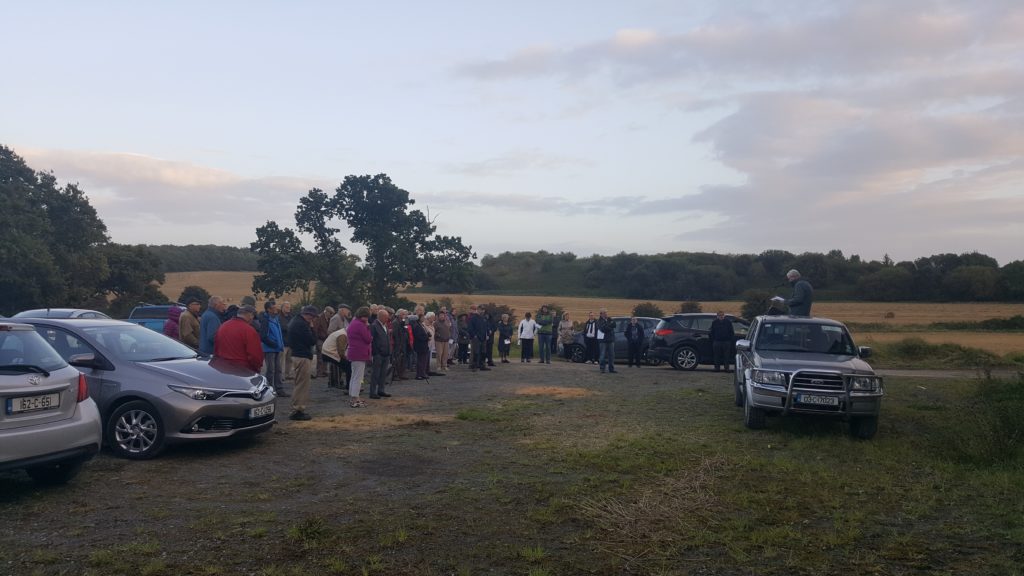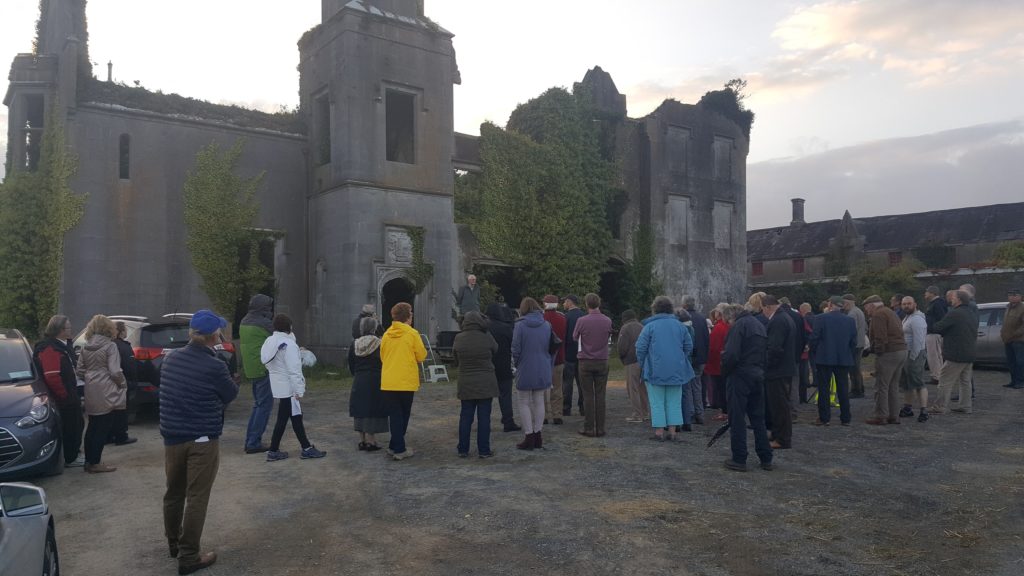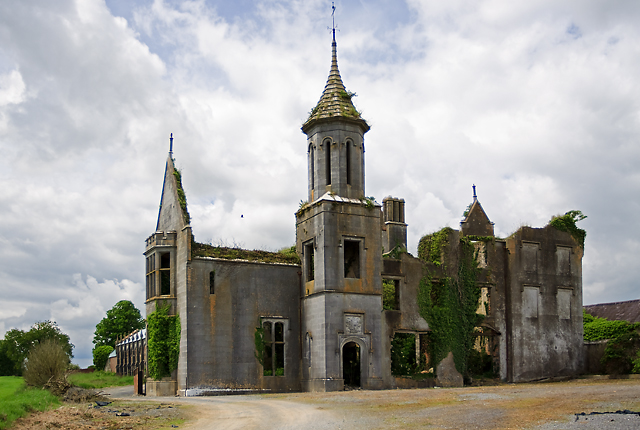The Mallow Field Club were hosted at Ballygiblin, Cecilstown on a pleasant evening this 5 September. The event was led by Charles Mortell, chairman of the Mallow Field Club, with the O’Donoghue family, current owners of Ballygiblin, making the estate available for the evening.
Fr Michael Dorgan, PP Castlemagner and Ed O’Donoghue gave a local perspective on the history of the estate in advance of a more detailed account of the history of the estate from Charles Mortell. The event was well attended and was recorded by Paddy Tobin (watch this space !).

The source material of Ed O’Donoghue’s contribution, an account of the symbiotic relationship of the Ballygiblin estate and Cecilstown village, is presented below;
CECILSTOWN & THE BALLYGIBLIN ESTATE
Cecilstown village has been an integral part of Ballygiblin Estate for most of the 250 years of its existence. The cycles of prosperity and decline of the village over its long history, mirror directly those of the patron Ballygiblin estate.

The village was founded by John Viscount Perseval, later 1st Earl of Egmont, in the mid 18th century. Sir John’s design was for a single street straddling the paved roadway that he laid from the main entrance of Loghort Castle towards Muddy Hill and the Kilguilky road. The site extended over 30 acres around an old Gaelic settlement called Baile na Bhrathaigh, a division of the townland of Ballyhass. It was intended as a residential centre for his workers, with rows of single-storey slated artisan dwellings interrupted here and there by more prestigious two-story houses for his English-born middle staff. It also provided schools for Protestant children. A school for Catholic children was added around 1770; that lay on Knockbui Hill and within the Loghort estate. It remained under the patronage of the Earls of Egmont until its demise in the 19th century. As a token to his then wife Elizabeth Cecil, he named the village after her famous family the Cecils, Earls of Salisbury, powerful early patrons of his own family. At the demise of the Earl of Egmont, Henry “Galloping Harry” Wrixon of Ballygiblin acquired 188 acres of Loghort estate, and Cecilstown village, including the full 30-acre site.
William Wrixon, son and heir of “Galloping Harry” began the development of Ballygiblin around 1780; Townsend (1815) mentions the excellent condition of the estate and the high quality of William Wrixon’s farming methods. Around 1826, William began the development of Cecilstown village, primarily as a residential facility for the workers on his prosperous Ballygiblin estate. There was a traditional locally that money left over from constructing Ballygiblin House were used to finish construction of the village.
By 1832 and the arrival of Lewis’s (pub.1837) surveyor in the area, the village consisted of a paved street of streetscape residential housing, with schools, Post Office, Courthouse & Constabluary Barracks, all built, sponsored and controlled by William and his recently ennobled son Sir William Wrixon Becher. The village also had a (coach) post-house and Spring and Autumn fairs for general agriculture produce. William Wrixon converted most of the 30 acres surrounding the village to farmland and constructed a Dower residence called ‘The Lodge’ where he was already in residence in 1815.
As the prosperity of Ballygiblin grew and continued, Cecilstown village grew with it. At the Griffith valuation 1852, the village comprised 56 private homes, each with a large garden, with all of Mr Wrixon’s amenities still in place. Through the 19th century and into the first decades of the 20th, Cecilstown was a thriving community and scarcely a family in the village wasn’t connected directly with the Ballygiblin estate. The prosperity ended abruptly with the death of Sir John Wrixon Becher in 1914 and the concomitant demise of the Wrixon Becher estate.
By 1920, the Courthouse and Constabulary barracks were a private residence and the village schools had all disappeared. The grand Mansion and farmyard at Ballygiblin were in a state of dilapidation and Cecilstown village was in the grips of economic depression, when Jack Lombard took over the estate (from the State) in 1935. Lombard quickly established a successful Racing Stable at Ballygiblin and the traditional estate-worker families in Cecilstown, soon made up the bulk of the workforce on the farm and in the busy stableyards. Gradually, the new prosperity pumped life into the old village. New shops and pubs appeared, responding to the inflow of wages and the presence of cash-rich horsey people and their followers. Families were educated and moved to economically sustainable employment, many of them self-employed around the Racing Stables. This prosperity lasted until the mid-1950s, when Lombard retired from racing and sold the Ballygiblin estate. This triggered an economic and social decline from which neither the estate nor Cecilstown has yet recovered.

